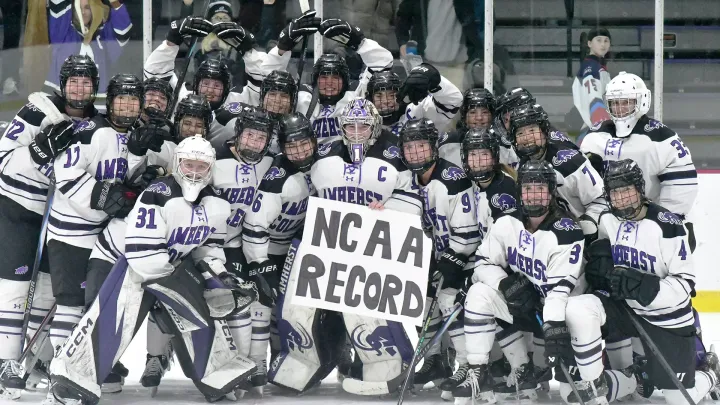The Mazzola Minute: The Return of the Champs
Golden State is back. Sure, the argument could be made the winners of the past two NBA championships never left, but I’m talking about a different iteration of the Warriors — the highly-motivated 2015-16 Warriors who dominated the league to the tune of a 73-9 record.
Spearheaded by the three-point shooting barrages of the Splash Brothers (Steph Curry and Klay Thompson) and an elite defense anchored by point-forward and small-ball center Draymond Green, that season’s Warriors changed the game of basketball.
Golden State’s free-flowing half-court offense was characterized by a chaotic system of misdirection and off-ball movement to free up a legion of deadly snipers. Curry and Thompson pulled up for threes in transition. Head coach Steve Kerr deployed lineups without a traditional center. The team disproved the old adage that a jump shooting team did not have a shot to win a title.
Curry demonstrated the value of a score-first point guard, while Thompson epitomized the modern three-point shooting, defensively-minded wing. Green showcased the importance of the point forward role, and Andre Iguodala became the ultimate role-player — a starting-caliber sixth-man whose veteran leadership helped youngsters develop. Those Warriors, renowned for their unmatched team chemistry, truly lived by their “strength in numbers” motto. Then, after blowing a 3-1 lead in the 2015-16 NBA Finals, the Warriors added former-NBA MVP Kevin Durant.
In the 2016-17 season, Golden State again earned the top-seed come playoff time, and the team went a remarkable 16-1 in the playoffs, obliterating every opponent.
Still, something was missing. Gone was the energy of the 2015-16 season. In 2017-18, Golden State took yet another step away from that magical 2015-16 season.
The Warriors lazily strolled through the regular season, making little effort to challenge the Houston Rockets for the No. 1 seed. Even in the playoffs, on the brink of elimination, Golden State looked borderline lethargic. If the Rockets hadn’t endured a historically bad shooting drought — Houston missed an NBA-postseason all-time worst 26 consecutive three-point attempts — the Warriors might not have even made it back to the finals.
To make matters worse, veterans Shaun Livingston and David West alluded to behind-the-curtain team chemistry issues. The Warriors had assembled a nearly indomitable juggernaut, yet they struggled to use it to its full capacity.
Key to these struggles was the fact that, Steph Curry was not playing like his 2015-16 self. His shot attempts were down, and he struggled to find a rhythm while consistently deferring to Durant.
As a result, the Warriors became more defined by Durant’s game, with a heavier focus on isolations and mid-range jumpers. This change in style peaked in the first games of the 2017-18 Western Conference Finals, when the Warriors took on the Houston Rockets.
Teams had figured out that forcing the Warriors to play through Durant upset their carefully-established flow. Even in high-scoring efforts, the Durant-led Warriors looked thoroughly outclassed. It’s no coincidence that, as the series against the Rockets wore on, an increased reliance on Curry resulted in better Golden State performances.
It’s easy to forget that in the 51 games Curry played during the 2017-18 regular season, he statistically resembled a legitimate MVP candidate. With Durant off the court, Curry was even scarier, putting up Wilt Chamberlain-esque scoring totals on unmatched efficiency. Durant’s presence in Golden State combined with injury woes spoiled Curry’s MVP candidacy.
Even when Curry was healthy, the narrative had changed around his status in the league. Golden State was no longer the hard-working, homegrown underdogs, led by a humble superstar.
They were the lazy villains, and that humble superstar had come to be loathed for his perceived arrogance. Curry was looked at as a second-rate superstar. He was no longer dominant, just talented.
Something else changed in the NBA since that 2015-16 season. Other teams started following the Warriors’ model. Small-ball lineups became commonplace, teams launched threes at a historic rate, other score-first point guards excelled, general managers coveted three-and-D wings above all else and veteran presence on the bench became essential. The Warriors didn’t invent all these trends, but their 2015-16 season served as a blueprint for the rest of the league.
Fast forward to today — it’s the 2018-19 season, and the Warriors are once again tied for the best record in basketball. Shooting the lights out and on pace to break his single-season three-pointers record, Curry is an early leader for MVP. Golden State’s chemistry is at an all-time high since the arrival of Durant. The Warriors are the most efficient team in basketball, leading the association in both field goal percentage overall and three-point percentage.
What changed? On the surface, new officiating rules are designed to encourage off-ball freedom of movement for shooters. This legislation should help Curry more than just about anyone else, yet his free-throw attempts are actually down and, watching Warriors games, it’s clear he’s still being manhandled in off-ball situations.
The Warriors’ entire system is predicated on the floor spacing created by Curry’s miraculous shooting. This year, Curry is playing more aggressively, upping his shot attempts to 20 per game. He’s taking and making obnoxiously difficult shots including some heavily-guarded,long-distance threes. Once again, Curry is a potent weapon for the Warriors and a terrifying threat for all others.
Even role players Alfonzo McKinnie, Jonas Jerebko, Jordan Bell, Damian Jones and Kevon Looney look elite in this iteration of the Warriors. In truth, they’re just benefitting from Curry’s earth-shattering gravity.
The Warriors have the talent to win the title with Curry playing at the level of a “mere” All-Star starter. It’s when he’s a legitimate MVP candidate that they are dominant. It starts and ends with Steph.




Comments ()